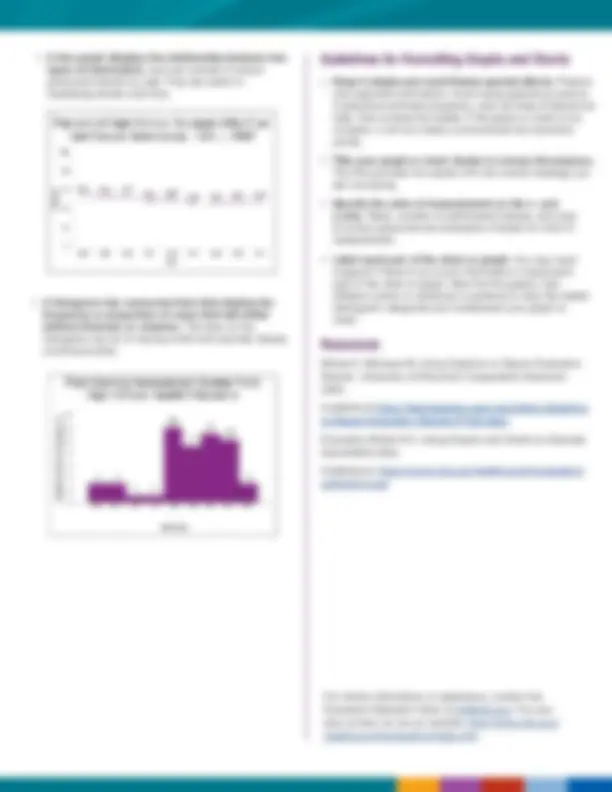



Study with the several resources on Docsity

Earn points by helping other students or get them with a premium plan


Prepare for your exams
Study with the several resources on Docsity

Earn points to download
Earn points by helping other students or get them with a premium plan
Community
Ask the community for help and clear up your study doubts
Discover the best universities in your country according to Docsity users
Free resources
Download our free guides on studying techniques, anxiety management strategies, and thesis advice from Docsity tutors
Concepts, definitions, types, and guidelines for creating effective graphs and charts to present quantitative data from various evaluation activities. It covers bar graphs, pie charts, line graphs, histograms, and formatting tips.
What you will learn
Typology: Study notes
1 / 2

This page cannot be seen from the preview
Don't miss anything!


C296013-H November 21, 2018
No. 12 | updated August 2018 Using visual representations to present data from Indicators for School Health, (SLIMS), surveys, or other evaluation activities makes them easier to understand. Bar graphs, pie charts, line graphs, and histograms are an excellent way to illustrate your program results. This brief includes concepts and definitions, types of graphs and charts, and guidelines for formatting.
Graphs and charts condense large amounts of information into easy-to-understand formats that clearly and effectively communicate important points. In selecting how best to present your data, think about the purpose of your graph or chart and what you want to present, then decide which variables you want to include and whether they should be expressed as frequencies, percentages, or categories. When you decide what kind of graph or chart best illustrates your data, you should consider what type of data you are working with. Categorical data are grouped into non-overlapping categories (such as grade, race, and yes or no responses). Bar graphs, line graphs, and pie charts are useful for displaying categorical data. Continuous data are measured on a scale or continuum (such as weight or test scores). Histograms are useful for displaying continuous data. Bar graphs, line graphs, and histograms have an x- and y-axis. The x-axis is the horizontal part of the graph and the y-axis is the vertical part.
Minter E, Michaud M. Using Graphics to Report Evaluation Results. University of Wisconsin Cooperative Extension.
Available at https://learningstore.uwex.edu/Using-Graphics- to-Report-Evaluation-Results-P1022.aspx Evaluation Briefs #12. Using Graphs and Charts to Illustrate Quantitative Data. Available at: https://www.cdc.gov/healthyyouth/evaluation/ pdf/brief12.pdf For further information or assistance, contact the Evaluation Research Team at ert@cdc.gov. You can also contact us via our website: http://www.cdc.gov/ healthyyouth/evaluation/index.htm.